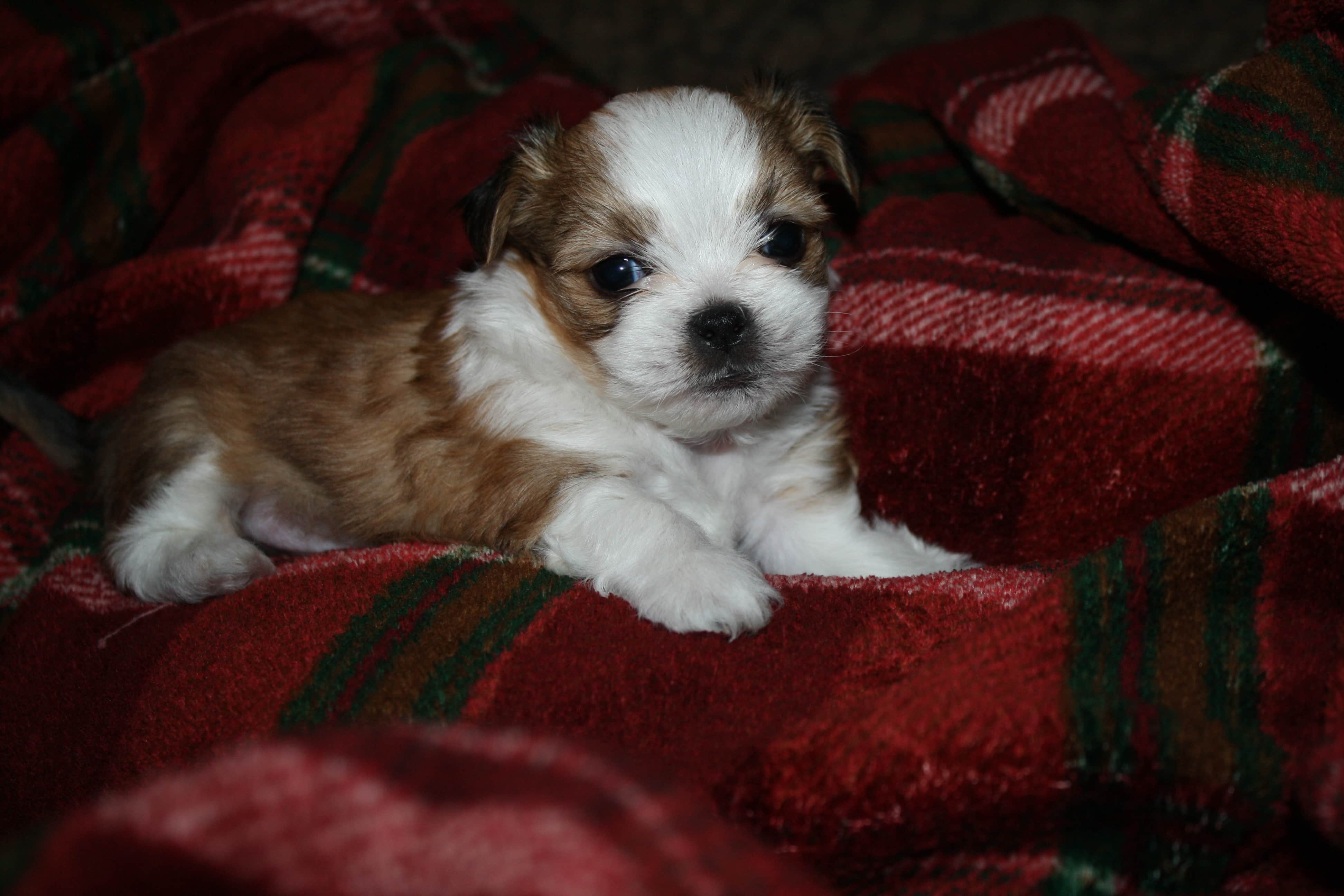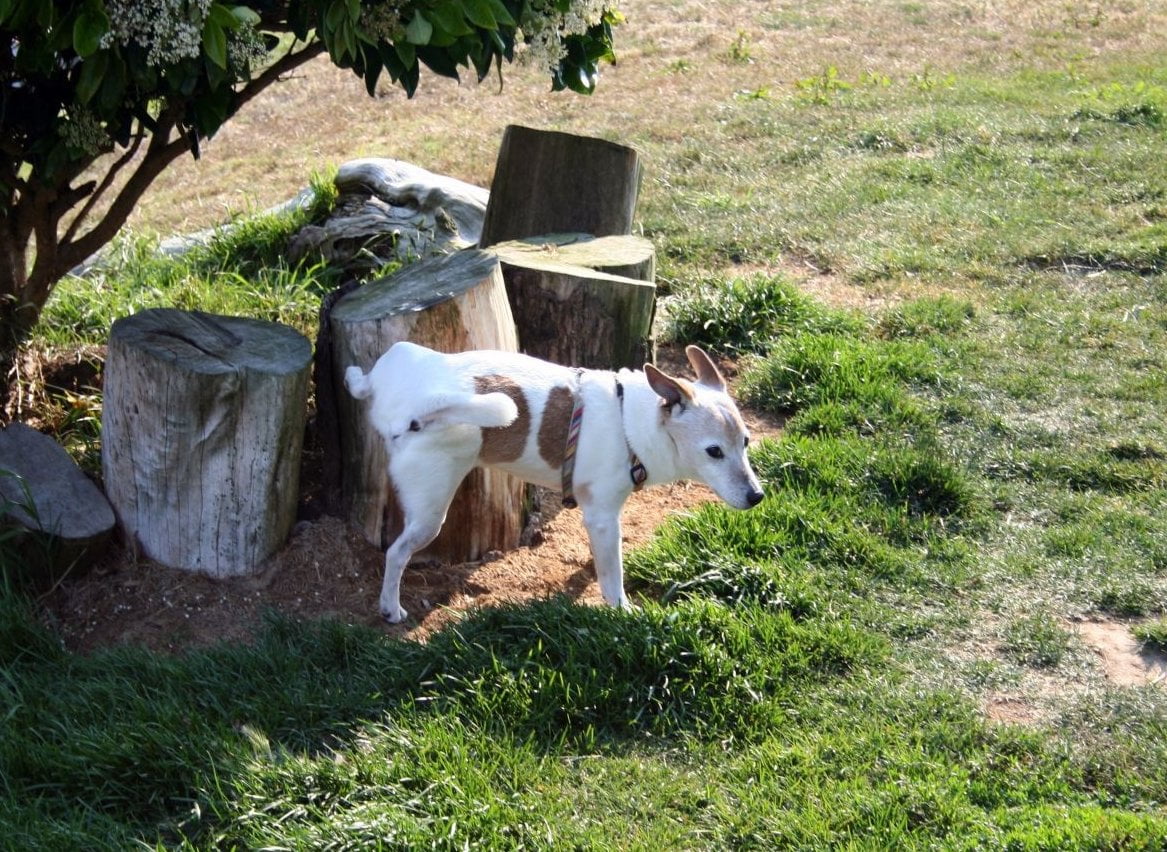What to do If your dog won’t pee outside

No one wants to clean up a urine soaked carpet when they get home after a long day at work.
Or find poop in their favorite pair of shoes. : /
The worst part is that this isn’t even a common occurrence in your dog’s behavior. They used to go outside with no problem at all.
They even enjoyed it!
So, why do our dogs seem content with peeing outdoors, and suddenly start using the home we share with them instead?
In this article we’ll take a look at what causes your dog to change their bathroom behavior and solutions to help you correct it. We’ll also get into causes outside your dog’s control like when they start to age, are just a puppy or have an injury.
Narrow down what caused this change in behavior
Traumatic experiences can have the same profound effect on your dog as it would on you. Deep paranoia and irrational fears can take over your pet’s mind and create an unfavorable reality.
After awhile using the bathroom in the house becomes a habit; you find yourself replacing bedsheets, carpeting, clothing, and other things you loved before they were soiled. Try not to be resentful, your dog just needs some guidance!
Have you ever seen a child fall into a pool or experience a near-drowning incident? Hopefully not!
But, they tend to exhibit unreasonable fear and doubt for every trip to the community pool afterward. They might even refuse to jump in, or place themselves anywhere near the water.
Remember, adult dogs only function at the level of a 2 year old human child. So while they’re minding their business and sniffing grass, and an angry hornet with a vendetta might just come along and sting your dog. It’s painful, and the area that’s been stung swells up. So, it isn’t all that surprising that they avoid the outdoors from that moment on.
This is just one example of what could have happened. Try to think back and pin point when your dog’s behavior changed. There might be a traumatic event that triggered the change in behavior. It’s important to narrow down the cause so you can begin treating the root cause of why your canine isn’t going potty outside.
Make your dog look forward to bathroom time
Dogs are creatures of habit, they love a predictable routine. Providing them with some exposure outside, no matter how little, will eventually make the act of exiting your home less frightening. Little things like toys, treats, and encouragement will help push the process along.
Before you give up on taking them outside, try some things that will help your dog remember why the outdoors were so much fun to begin with.
Coax them with a toy or a treat, start while you’re inside, and, if you have them trained, use the “come” command. As soon as your dog moves toward you, give them praise and take a few more steps out the door. Use the “come” command again, once your dog reaches a point where they’re moving toward the door without hesitation, work with the toy to keep them focused on the positive aspect of their newfound freedom.
Encourage them to sniff the grass and reintroduce themselves once they seem content. Even if it’s just a short squat in the grass, always give your dog praise once they’ve pee’d outside. This shows that you’re pleased with their “good” action, and all our pets really want is to please us.
Exposure therapy will help them overcome a traumatic incident and get them back on track to a regular bathroom routine.
It will take a few tries before your canine gets it right
Urinating and pooping in the house should register as a “bad” action with your dog. While you should never yell, hit, or rub their nose in the mess, you need to immediately move them onto a pee pad or bring them as far outside as possible.
By showing them the correct way to relieve themselves at the very moment an accident occurs, they’ll slowly begin to understand what you expect. This kind of training needs to be done within a few minutes of the time of the accident. Otherwise, your dog will not make the connection, and will most likely be confused as to why you’re displeased.
Remember, clear and simple communication with your dog is the quickest way to get results when training them.
Sometimes when we’re frustrated we are impatient with our pets, but it’s important to keep your cool. Canines tend to pee on themselves when frightened, or when trying to be submissive; getting angry won’t help the situation.
Seasonal changes that can affect behavior
During the summertime bugs, grass, and pollen appear more often than usual. When a dog experiences dermatological flare-ups from certain types of plants, or an allergic reaction to a mosquito or flea bite their skin becomes red and inflamed. The aggravating itchiness urges your dog to chew at the area, resulting in hair loss, dry skin, and sometimes open wounds and scabbing.
Obviously, this is one reason why your dog might avoid the outdoors. If you’re dealing with an issue such as this, try giving your dog Benadryl to ease the irritation. Here’s a simple guide on how to administer Benadryl to your canine.
Attempt to have your pup come outside with you and ease them into grass slowly. That way if the problem persists, you’ll have a mild reaction that doesn’t cause significant damage to your dogs skin.

As your dog gets older they may not be able to go pee outside like they used. Image: Jondoeforty1
Problems with hips, walking, and getting up and down stairs
One reason why your dog starts going to the bathroom inside that we haven’t touched on is aging. If your senior pup avoids getting up to go because of their aching joints, getting them outside is a bit more challenging.
You can’t train away the pain of old bones, but you can make the restroom area for your dog more accessible for their special needs.
For dogs that fall into this category, but are still able to walk on their own without very much help, you can purchase a ramp(we recommend the Solvit PetSafe Ramp on Amazon) or you can build one. Most patios and decks have one large step or a staircase, but ramps provide a smooth surface with grip. While they’re mostly used to help dogs get in and out of vehicles, it’s still an extremely useful tool to keep on hand.
Although ramps are a viable solution, if your dog is in serious distress, quick movements and sharp pains might trigger a response in your dog to pee. In an instance like this, you should talk with your veterinarian to manage their pain. Once their pain is under control your pet should be able to use the bathroom as they normally would.
Try pee pads with canines who are incapable of going outside
You’ve probably done all you can at this point, but your dog is still peeing in the house! If it’s not a problem with training, trauma, allergies, or problems with hip and joint pain, there’s likely an issue with the bladder itself, or the nerves that surround the organ.
Dogs with pinched nerves, or nerves that have been damaged over time, might not even notice that they’re trickling all over themselves, and your house. In extreme cases like these, the only way to resolve the problem is to use pampers.
Most of the time though, they feel the urge to pee coming on, but they just can’t hold it long enough to make it to the door; of course, this results in an accident. This doesn’t mean that your dog isn’t happy, or able to live a quality life.
You can purchase a grass pad(here’s our full guide on grass pads) as an indoor substitute. It has the same look and feel as the grass in your backyard. It’s the perfect long term solution, and some include a drip tray that you can empty and spray out to keep it smelling fresh.
Disposable puppy pads from Amazon also work well, but the attraction of the scent will occasionally give some dogs the urge to tear them to pieces. Not to mention, if you own a large breed who urinates frequently, puppy pads can become expensive.
Your dog might not take to the grass pad right away, and that’s okay. Just encourage them in the same way you would if you were trying to teach them a trick or get them back outside. When your dog takes interest in the pee pad, immediately give them praise and a snack. You can use the same commands you would if you were outdoors like “go potty” and “good job!”.
Once they’ve successfully used their grass pad. Remember to wash it out thoroughly and keep it clean so that your dog will continue to use it. You can put the grass pad out on your balcony or porch too.
Extra cleanup is necessary for a dog with special needs
Your pet will most likely be pleased that they have a safe, comfortable, clean spot to do their business. However, you might need to take an extra step and wipe down their paws after they’ve finished. This doesn’t necessarily need to happen every single time, but they’re likely to step in their waste.
Keep some baby wipes or paper towels on hand for a quick cleanup; after putting in the time and effort to teach your dog to use a grass pad, the last thing you want is for them to trek waste through the home!
With some thought and patience you can correct your dog from peeing inside or find a way to manage it. Stay calm and before you know it your dog will be back to their normal routine!
-Chloe Weaver
Chloe Weaver is a kennel technician and long-time dog owner. She currently has a 4-year-old Labradane and a 7-year-old Staffordshire mix. As a lifelong animal lover, she has volunteered for several rescues and helped to foster dogs and cats.
Feature image: Michael Ruiz
